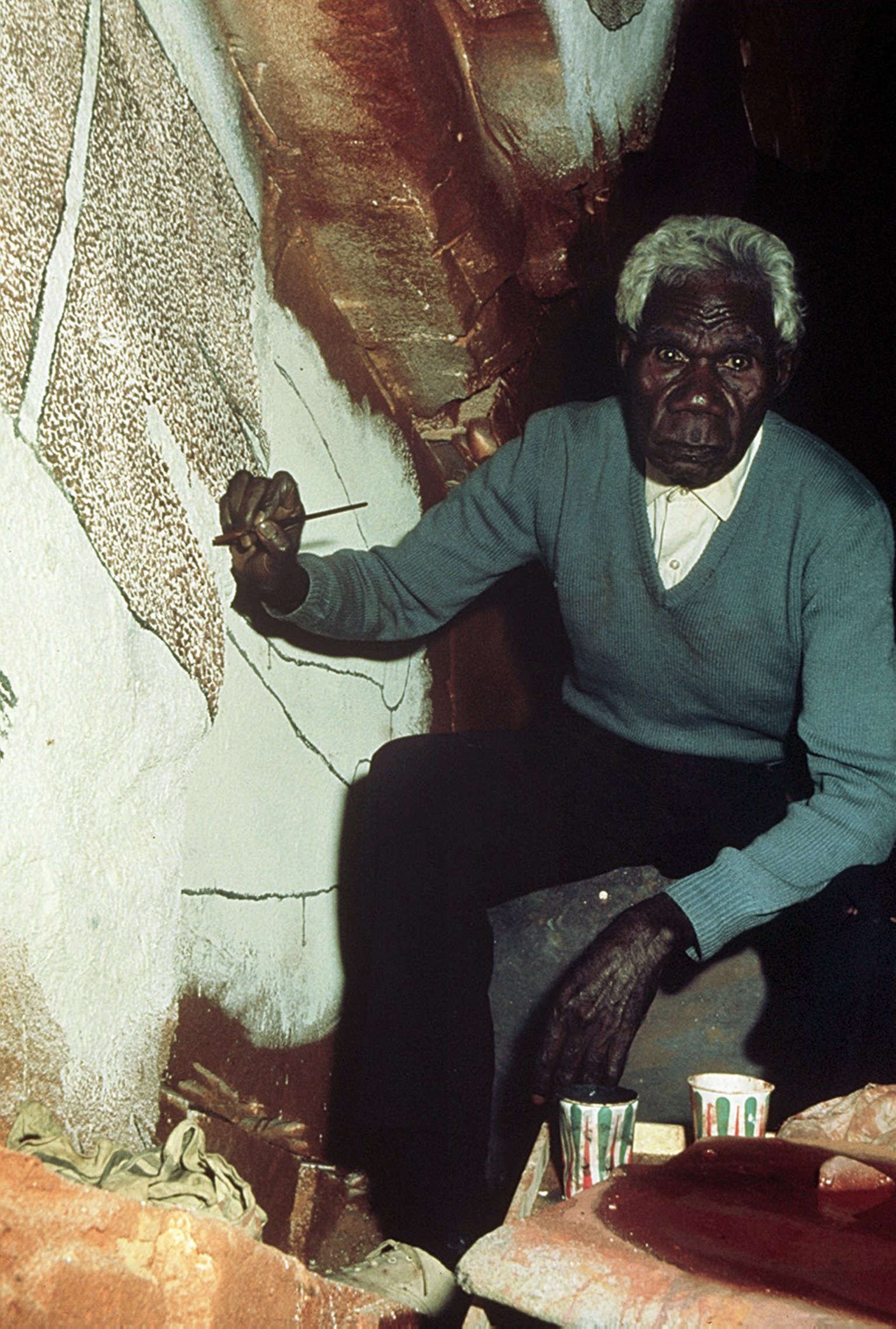WATTIE KARRUWARA
MARKET ANALYSIS

Wattie Karruwara is an art figure largely untied to a particular community. As one of the first individual artists recognized in the Kimberley, his career did not follow the trajectory of many other Kimberley artists who only began receiving recognition post 1970s, with particular promotion from key figures such as Mary Macha. Instead his career was firmly entwined with early anthropological research in the Kimberley area. As a consequence many of the finest examples of his Wandjina figures are now in museums and national art galleries. Moreover these works are rare, bark being a tradition originating in Arnhem Land and a medium difficult to source in the Kimberley. Only three Wandjina barks have surfaced on the secondary market including the impressive, c.1962 work, that sold for a considerable $26,350 against a presale estimate of $15,000-$20,000 at Sotheby’s in July 2004, the 76 x 30 cm. bark created in 1959 that achieved $13,200 as Lot 1 in Lawson~Menzies May 2006 sale, and the more diminutive Wandjina c1962, standing only 41 cm tall that was sold for a respectable $7,200 despite being estimated at $12,000-$18,000 y Sotheby’s in July 2003.
It has been Wattie’s watercolours however, that have achieved his highest prices. In 2002 four watercolours were sold for more than $29,000 at Sotheby’s including one which set his record at $59 250. No doubt this result prompted the legendary sale of the entire remaining McCaffrey’s collection in 2003 through Sotheby’s, at the request of his widow Winifred. The sale, unprecedented of its kind, was catalogued under separate cover and looked to be enormously successful. None of the watercolour works sold for any less than $8,000, and the majority achieved prices in excess of $20,000. Yet while several of the works passed their top estimates and one in particular achieved his 3rd highest price ever at $40,450, other results were disappointing and the auction average for his watercolours fell by nearly half to $22,109. A relatively small proportion remained unsold because of optimistically high estimates rather than inferior quality, However when three of these were included again in Sotheby’s 2005 sales they were once again passed in, despite their obvious quality and a hefty drop in the estimates.
The sale of such a large body of work that was so beautifully documented positioned Wattie Karruwara as an important figure in Kimberley art history. His record on the secondary market is distorted by this one-off event, in much the sale way as the records for works that occur in occasional sales of major collections tend to over inflate their values. Due to all the hype, the prices paid would have been at a premium, and it should be some years before any of the buyers of these works will be able to sell their pieces at a profit. . This is evidenced by the fact that very few works have appeared since 2003 and those that sprang up in 2005 were passed in at auction. A few of his boab nuts and carved works have sold since the 2003 auction, but few significant watercolours have done well, and have failed to rival the 2002 record prices. In 2006 a Wandjina slate nearly doubled its estimate selling for $13,200 at Sotheby's Melbourne while is the same year Lawson-Menzies also achieved $13,200 in their May sale for a Wandjina on bark. No works appeared during 2007, however in 2008, only 2 of the 4 works on offer were successful both of which were watercolours, with the highest price paid being $9000 for a McCaffrey provenanced work measuring 56 x 76 cm that had been estimated by Sotheby;s at $7000-10,000 in their October sale (Lot 271).
With just a few year’s results, and recent falls in the value of his watercolours, it is difficult to predict the short-term future of works for this artist. Good bark paintings are rare and will always sell well, if in good condition when they infrequently appear on the market. Although we have seen a large number of works during the last five years they more than likely constitute the bulk of his artistic output, and it is these works that are most likely to re-appear time and again in the market over the coming years. Never the less, Wattie’s Karruwara’s works are rare treasures, and despite the high estimates they are likely to carry, they should be thought of as integral to any serious Kimberley collection.
© Adrian Newstead

